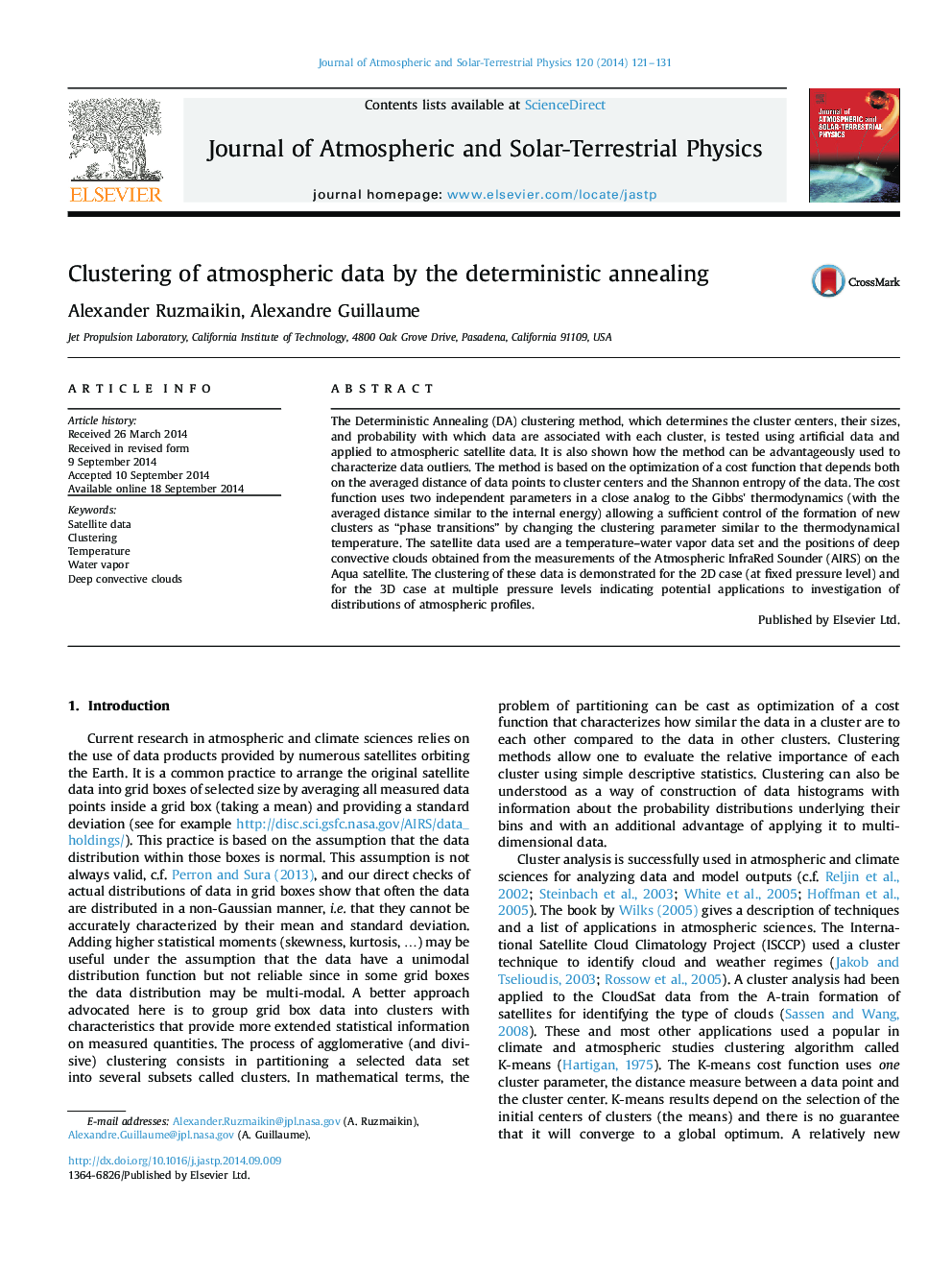| Article ID | Journal | Published Year | Pages | File Type |
|---|---|---|---|---|
| 1776529 | Journal of Atmospheric and Solar-Terrestrial Physics | 2014 | 11 Pages |
•Advanced clustering method, Deterministic Annealing, applied to satellite data.•The formation of clusters is treated similar to thermodynamical phase transitions.•Clustering of temperature and water vapor demonstrated for 2D and 3D cases.•Number of clusters of deep convective clouds did not change in the last decade.
The Deterministic Annealing (DA) clustering method, which determines the cluster centers, their sizes, and probability with which data are associated with each cluster, is tested using artificial data and applied to atmospheric satellite data. It is also shown how the method can be advantageously used to characterize data outliers. The method is based on the optimization of a cost function that depends both on the averaged distance of data points to cluster centers and the Shannon entropy of the data. The cost function uses two independent parameters in a close analog to the Gibbs' thermodynamics (with the averaged distance similar to the internal energy) allowing a sufficient control of the formation of new clusters as “phase transitions” by changing the clustering parameter similar to the thermodynamical temperature. The satellite data used are a temperature–water vapor data set and the positions of deep convective clouds obtained from the measurements of the Atmospheric InfraRed Sounder (AIRS) on the Aqua satellite. The clustering of these data is demonstrated for the 2D case (at fixed pressure level) and for the 3D case at multiple pressure levels indicating potential applications to investigation of distributions of atmospheric profiles.
